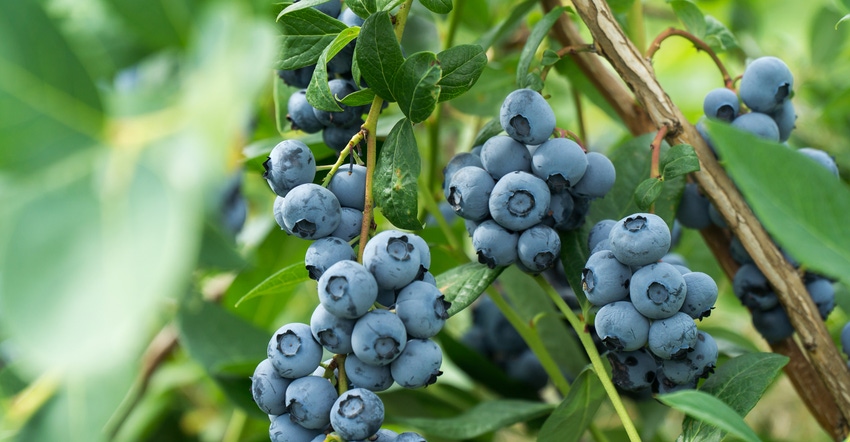May 20, 2020

Patrick Edger, assistant professor in the Michigan State University Department of Horticulture, recently was awarded a four-year, $1.13 million grant, including matching funds, from USDA to improve blueberry and cranberry fruit quality traits.
Edger’s lab is leading the effort to generate the first pangenome, the entire set of genes present in a species, for the genus Vaccinium, which consists of shrub species, including those that grow blueberries and cranberries.
Called the Vaccinium Coordinated Agricultural Project, or VacCAP, this will help guide future breeding efforts for blueberries and cranberries, and includes a network of collaborators at universities and USDA partners throughout the U.S.
“Our goal is to discover the genes that are associated with superior fruit quality traits,” Edger says.
Genetic analysis
Along with Ph.D. student Alan Yocca, Edger is working to generate genomes for 24 blueberry cultivars or cultivated plant varieties, and 12 cranberry cultivars. These genomes will help shed light into the existing genetic diversity for these two important crops.
Unlike a single genome, a pangenome is able to capture all of the genetic diversity present within a species. Edger estimates at least 30% of genes may be present or absent, depending on the cultivar.
“If we base all our analyses on a single genome, we're going to miss a lot of genes,” Edger says. “On a fundamental research level, we’re really interested in better understanding how genomes evolve and what mechanisms contribute to the observed gene content variation present within a species.”
Constructing a pangenome requires substantial computational resources. Edger is collaborating with the MSU Institute for Cyber-Enabled Research, which provides researchers with access to high-performance technology, to meet these needs.
“We’re delighted that the Institute for Cyber-Enabled Research will contribute to the VacCAP project by solving its computational and data storage needs,” says Brian O’Shea, ICER director.
By building a pangenome, Edger and Yocca hope to identify new genes that could ultimately yield a firmer, more flavorful and aromatic blueberry.
“The aim of this grant is really to construct a road map,” Edger says. “What genes and variants of genes are important if our goal is to improve firmness and overall fruit quality?”
Industry effects
Firm fruit is easier to machine harvest, and machine harvesting can help blueberry growers increase their profit margins.
“Labor for picking fruit, as you can imagine, is scarce,” Edger says. “For growers, not to have to hire people to pick fruit — if they can be harvested by machines — increases their profitability.”
Labor costs for hand harvesting account for more than half of blueberry production costs.
While planning for this project, Edger and Yocca conducted a national survey of 500-plus growers, breeders, processors and others in the blueberry industry. Machine harvestability was a top priority across all regions throughout the U.S.
“Developing new cultivars that propel an entire industry forward is really exciting and rewarding,” Edger says. “This is a huge priority, and I'm looking forward to helping the blueberry industry in Michigan.”
Michigan typically ranks in the top five states nationally for blueberry production.
"For years, we have mechanically harvested for the processing market, but unveiling a blueberry bush that produces fruit that ripens more uniformly, and firmer, will undoubtedly be more suitable for machine harvest," says Kevin Robson, executive director of the Michigan Blueberry Commission. "We look forward to seeing the results of this research project, and how it will help make Michigan's blueberry industry more sustainable."
Source: MSU, which is solely responsible for the information provided and is wholly owned by the source. Informa Business Media and all its subsidiaries are not responsible for any of the content contained in this information asset.
You May Also Like




